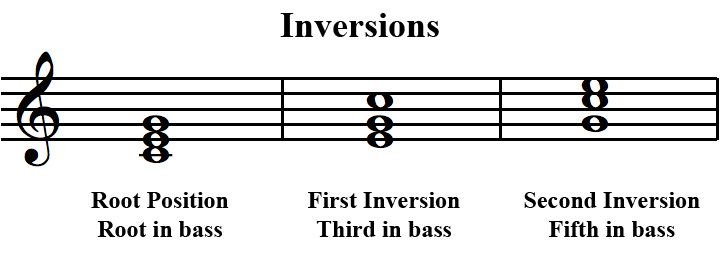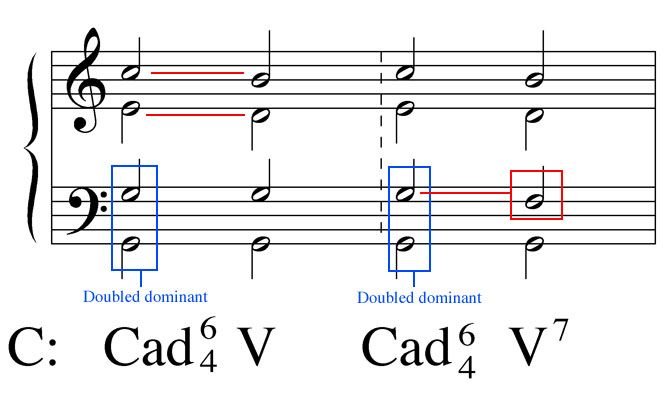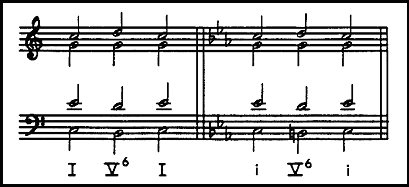
The second inversion triad or 6-4 chord
The second inversion is mostly used as a passing chord or neighbour chord. The 6-4 chords that are accented can be misleading, because most of the times the fifth and third of the dominant are embellished. This means that the chord is still a V, but because of the double suspension in looks like an tonic(I)6-4. On accented measurements it is most of the times a V6-4 resolving in a V. You’ll see a 6-5 and 4-3 relationship. This is the only 6-5 chord on an accented measurement.

Tonic and dominant in first inversion or added sixth
This chord is used so the bas can climb in triad. First inversions are less stable, but they provide movement, variety and continuity. The seventh is not possible in root position, but is possible in first inversion. This also applies for the fourth degree. PAY ATTENTION! vii is most of the times (half)diminished.
If it is possible; double the soprano; V6 or I6/viio7 or IV6. When that is not possible, double the root. Watch out by V6 that the leading tone could be in the soprano; so don’t double it then.
I – V6 -I with the help of a neighbour chord in soprano. Rules:
- try to keep the notes the same where possible (mostly in the middle voices)
- double the soprano and otherwise the root
- never double the leading tone

Viio6 --> bas and soprano move to each other. You’ll use the chord when the bas moves from the first degree I to I6 (c – d – e = I – viio6 – I6). This replaces the dominant, because of the presence of the leading tone; the third and fifth are then possible to be doubled.
IV6 --> intermediate for V and V6 (g – a – b = V – IV6 – V6). In this option it is only a connection; it hasn’t the function of the subdominant.

In minor; augmented second from the flat a to b, so the flat a should be in a different voice than the b after it. WATCH OUT FOR DISSONANT AND CHROMATIC LEAPS.
Yours Sincerely @inMusicalTerms
with the help of The Complete Musician: An Integrated Approach to Tonal Theory, Analysis, and Listening, 3rd Edition - Steven G. Laitz
P.s.: chech out my article about the dominant seventh : https://steemit.com/music/@inmusicalterms/music-theory-writing-harmonies-the-dominant-seventh
or an interesting film about hip-hop; https://steemit.com/music/@inmusicalterms/the-hip-hop-years
1st image: http://d4u3lqifjlxra.cloudfront. net/uploads/example/file/951/Inversion.jpg
2nd image: https://www.d.umn .edu/~jrubin1/JHR%20Theory%20Cadential%2064.htm
3rd image: http://www.waybuilder.net/sweethaven/Humanities/Music/TraditionalHarmony/default.asp?iNum=0303
4th image: http://tmmtheory. com/study-guide/part-ii-units-9-11/
You got a 0.64% upvote from @allaz courtesy of @inmusicalterms!
was good bro
heres some dope hop for you on the blockchain.
Dtube: